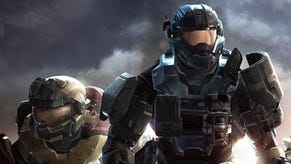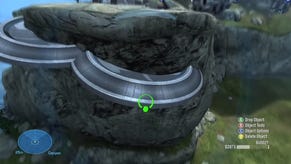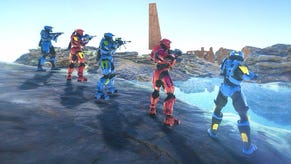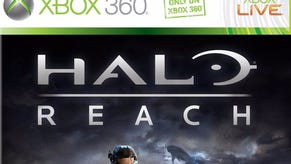Digital Foundry vs. Halo: Reach beta
Performance analysis, latency tests and more with tons of video to pore over.
Moving away from the tech and back towards the performance element, we can see that Bungie has also been at work in improving the response of the player controls. Reach operates at 30FPS, and all of our previous latency experiments have concluded that the fastest possible response we see in any console game running at this frame-rate is 100ms.
Halo 3 was slightly odd in that while pulling the trigger resulted in that fast 100ms response, the Master Chief appeared to have lead in his boots: when jumping, controller lag "leapt" upwards to 150ms. So how does the Reach beta fare? It's time to roll out Digital Foundry's latency controller board, as supplied by the brilliant Benjamin J Heckendorn.
Interestingly, it appears as though Bungie has tweaked the response so there is a uniform, swift 100ms latency - the best we can expect from a 30FPS title. Combined with its mostly unwavering frame-rate and there is absolutely no complaint whatsoever with the controls. They work well, and feel smooth and responsive.
A really important element of the game that's unlikely to get much coverage elsewhere (journos tend to operate like lone wolves) is the inclusion of Halo's standard split-screen modes.
Again, there is much in common with Halo 3 here in that there are two basic setups. First of all there's the two-player split-screen. Again, just like Halo 3, there's a horizontal split down the centre of the screen, and the format switches to 4:3, essentially giving two mini 16:9 images with black borders side-by-side. Four-player sees each participant get a 640x360 chunk of the 720p real estate.
We didn't have time to run performance analysis on our captured clips (we'll roll that out in a future blog update if there's anything interesting to add), but overall performance felt much the same as it does in Halo 3: very solid, very playable, and recognisably Halo: Reach, with graphical compromises you're not going to notice in the reduced screen-space.
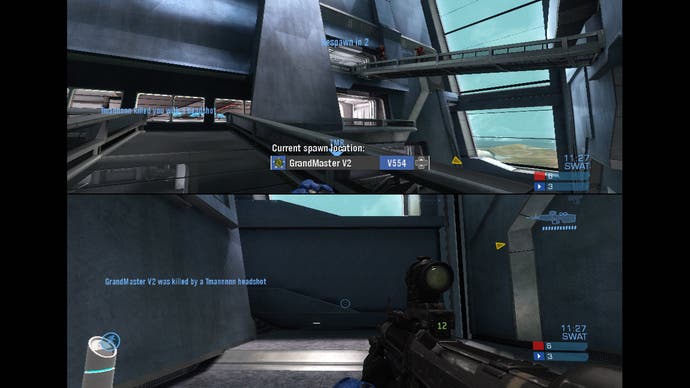

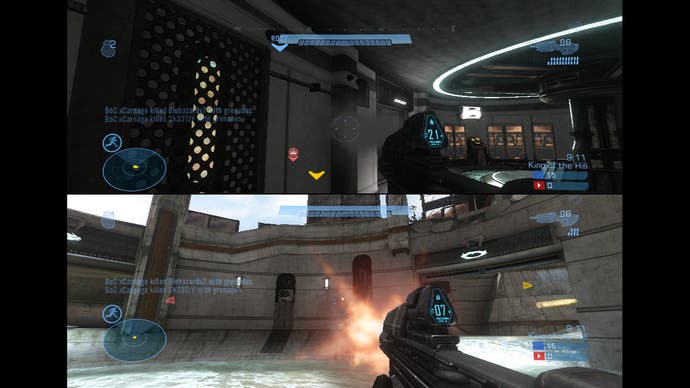

In the Reach beta, split-screen allows up to four players to participate in any of the multiplayer variant games, and it is rather cool to send in a quad-squad of gamers into one of the more tactical game-types, acting as a local team up against the random hordes the internet presents. Bearing in mind the closeness of the implementation compared to Halo 3, we can also hope that these multiplayer options will roll back into the single-player campaign too.



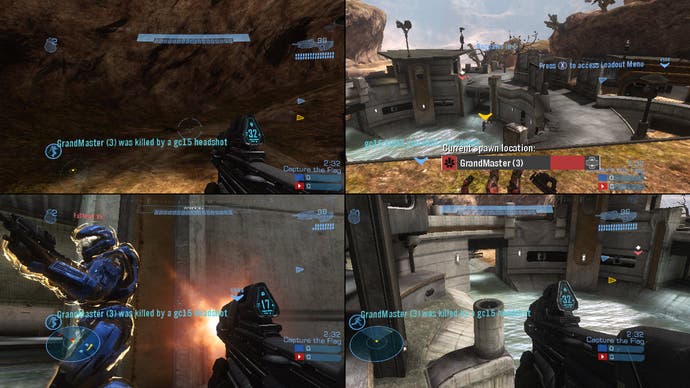
So, overall impressions of the Reach beta overall? Undoubtedly, Bungie has once again opted for evolution over revolution - an approach you can appreciate bearing in mind the domination that Halo 3 used to enjoy in the Xbox Live usage charts until the Call of Duty juggernaut took over.
Similar to first impressions of the Halo 3 beta, you feel instantly "at home" with the gameplay and then it's simply a case of adapting to the new additions (principally the new playlists and especially the loadouts) and making the most of them. Jetpacks, scouting, guarding, assassinations... all fit seamlessly into the delicate balance of the Halo multiplayer ecosystem and crucially they work well.
However, it will be interesting to see how Halo: Reach fits into 2010's hotly contested market for online multiplayer shooters, and whether it has enough in terms of innovation to smack down its usurping rivals. From our playtest of this admittedly limited, in-production game, Reach clearly has plenty going for it, but it will be interesting to see how gamers take to Bungie's chosen path of evolution up against the innovations adopted by its competitors.
You look at a game like Battlefield: Bad Company 2 with its own brand of stunning visuals and an unmatched destruction model, and there is the sense that Reach simply doesn't compete... indeed, that it doesn't want to, that it exists in its own universe of what works and what doesn't in a Halo shooter. There's a sense of an established structure that you can build upon, but shouldn't revolutionise. Perhaps this is something we'll see addressed in Bungie's forthcoming multiplayer project with new partner Activision.
Of course, while the Reach beta is a tantalising sampler it's also far from complete. Clearly there's no hint of what we really hope will be an awesome single-player campaign in this multiplayer-only beta. There's also the sense that a lot of the multiplayer elements are being kept back too
In the menu selections, one of the playlists hasn't been activated. Gameplay is currently limited to eight players rather than the full 16 promised in the full game. From what we've played so far, there's no sign of any vehicles either (granted, they wouldn't be appropriate within the relatively small levels we have access to thus far), but obviously they're going to be there.
The Reach beta is a substantial 1.15GB download, so it'll be interesting to see whether there's any content in there that has not been unlocked thus far. With a relatively short window of access expiring in a couple of weeks, hopefully we'll be finding out sooner rather than later.
Update: Bungie's Beta Guide talks about a further two maps - Boneyard and Overlook - set to unlock later on... Boneyard is said to be the largest multiplayer Halo map ever made. Now that should be an interesting work-out for the new engine...




